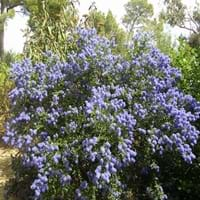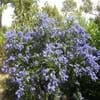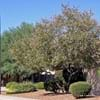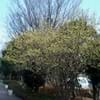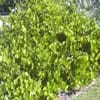Life Span
Perennial
Perennial
Origin
Hybrid origin
Asia, Europe, North America
Types
Not Available
Black Ash, Blue Ash, California Ash, Carolina Ash, European Ash
Number of Varieties
Not Available
Habitat
Coastal Mountains, Coastal Regions, Hillside, Open Forest, Rocky areas
Forest edges, Hillside, Woods
USDA Hardiness Zone
5-8
3-9
Sunset Zone
5, 6, 7, 8, 9, 14, 15, 16, 17, 18, 19, 20, 21, 22, 23, 24
9, 12, 13, 14, 15, 16, 17, 18, 19, 20, 21, 22, 23, 24
Habit
Cushion/Mound-forming
Oval or Rounded
Flower Color
Pink, Light Pink
White
Flower Color Modifier
Not Available
Not Available
Fruit Color
Hot Pink
Not Available
Leaf Color in Spring
Dark Green
Dark Green
Leaf Color in Summer
Dark Green
Dark Green
Leaf Color in Fall
Dark Green
Dark Green
Leaf Color in Winter
Not Available
Dark Green
Plant Season
Summer
All year
Sunlight
Full Sun, Partial Sun, Partial shade
Full Sun, Part sun
Type of Soil
Loam
Loamy, Sandy
The pH of Soil
Acidic, Neutral, Alkaline
Acidic
Soil Drainage
Well drained
Well drained
Bloom Time
Late Spring, Early Summer, Early Fall
Late Spring, Spring
Tolerances
Drought
Drought, Pollution, Soil Compaction
Where to Plant?
Ground, Pot
Ground
How to Plant?
Seedlings, Stem Planting
Grafting, Seedlings, Stem Planting, Transplanting
Plant Maintenance
Medium
Medium
Watering Requirements
Average Water Needs, Do Not over Water, Never Over-water, Water Deeply
Does not require lot of watering, Medium, Prefer drip-irrigation instead of Over-head watering
In Summer
Lots of watering
Lots of watering
In Spring
Moderate
Moderate
In Winter
Average Water
Average Water
Soil pH
Acidic, Neutral, Alkaline
Acidic
Soil Type
Loam
Loamy, Sandy
Soil Drainage Capacity
Well drained
Well drained
Sun Exposure
Full Sun, Partial Sun, Partial shade
Full Sun, Part sun
Pruning
Remove damaged leaves, Remove dead branches, Remove dead leaves
Prune in winter, Prune prior to new growth
Fertilizers
All-Purpose Liquid Fertilizer
All-Purpose Liquid Fertilizer
Pests and Diseases
Red blotch
Bark splits, Crown gall, Epicormic Sprouting, Woodpecker feeding
Plant Tolerance
Drought
Drought
Flower Petal Number
Single
Single
Foliage Texture
Medium
Medium
Foliage Sheen
Glossy
Glossy
Attracts
Butterflies
Birds
Allergy
Asthma, breathing problems
Not Available
Aesthetic Uses
Beautification, Bouquets, Landscape Designing, Showy Purposes
Not Used For Aesthetic Purpose
Beauty Benefits
Not Available
Not Available
Environmental Uses
Air purification, Food for animals, Prevent Soil Erosion
Air purification
Medicinal Uses
Diarrhea, Inflammation, Jaundice
Fever, Liver problems
Part of Plant Used
Flowers
Leaves, Stem
Other Uses
Can be made into a herbal tea
Used as Ornamental plant
Used As Indoor Plant
No
No
Used As Outdoor Plant
Yes
Yes
Garden Design
Container, Feature Plant, Foundation, Mixed Border, Rock Garden, Wall, Topiary, Bonsai, Espalier
Shady Tree, Showy Tree
Botanical Name
CEANOTHUS x pallidus
Fraxinus
Common Name
Wild lilac
Ash Tree
In Hindi
Ceanothus
राख पेड़
In German
Ceanothus
Esche
In French
Ceanothus
Frêne
In Spanish
Ceanothus
Fresno
In Greek
Ceanothus
δέντρο Ash
In Portuguese
Ceanothus
Freixo
In Polish
Ceanothus
Jesion
In Latin
Ceanothus
Fraxinum
Phylum
Magnoliophyta
Anthophyta
Class
Magnoliopsida
Magnoliopsida
Family
Rhamnaceae
Oleaceae
Clade
Angiosperms, Eudicots
Angiosperms, Asterids, Eudicots
Tribe
Not Available
Oleeae
Subfamily
Not Available
Not Available
Season and Care of Ceanothus and Ash Tree
Season and care of Ceanothus and Ash Tree is important to know. While considering everything about Ceanothus and Ash Tree Care, growing season is an essential factor. Ceanothus season is Summer and Ash Tree season is Summer. The type of soil for Ceanothus is Loam and for Ash Tree is Loamy, Sandy while the PH of soil for Ceanothus is Acidic, Neutral, Alkaline and for Ash Tree is Acidic.
Ceanothus and Ash Tree Physical Information
Ceanothus and Ash Tree physical information is very important for comparison. Ceanothus height is 60.00 cm and width 60.00 cm whereas Ash Tree height is 75.00 cm and width 45.00 cm. The color specification of Ceanothus and Ash Tree are as follows:
Ceanothus flower color: Pink and Light Pink
Ceanothus leaf color: Dark Green
Ash Tree flower color: White
- Ash Tree leaf color: Dark Green
Care of Ceanothus and Ash Tree
Care of Ceanothus and Ash Tree include pruning, fertilizers, watering etc. Ceanothus pruning is done Remove damaged leaves, Remove dead branches and Remove dead leaves and Ash Tree pruning is done Prune in winter and Prune prior to new growth. In summer Ceanothus needs Lots of watering and in winter, it needs Average Water. Whereas, in summer Ash Tree needs Lots of watering and in winter, it needs Average Water.
